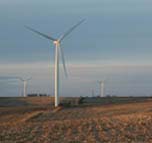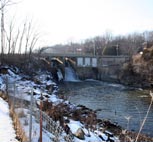Survey and Evaluation
Survey and evaluation of historic properties is conducted for a wide variety of purposes. Reconnaissance level (aka windshield survey) projects are commonly utilized to make a broad review of an area or an assessment of a single property for the purpose of providing a cursory evaluation of the potential eligibility for National Register of Historic Places. Reconnaissance level survey and evaluations are often the initial step in an extended project. As the name implies, intensive level surveys look much more closely at a resource’s National Register eligibility, with research directed at developing historical contexts from which the resource may draw significance. Intensive level evaluation results in a recommendation regarding eligibility to the National Register.
Wind Farms and Cellular Telecommunication Towers
Resources listed on or bearing the potential for listing on the National Register of Historic Places that are located within the APE are evaluated for potential adverse effect (direct and visual) posed by the proposed tower.
Although the construction of wind farms does not presently fall under a regulatory process in terms of their potential impact to historical and architectural resources, a modified version of the existing Section 106 guidelines established for the review of cellular telecommunications towers can be applied to wind farm reconnaissance level survey in an effort to provide a thorough evaluation of the potential for adverse effect (both direct and visual) that the construction of a field of wind turbines may pose on historical and architectural resources located within a defined area.
Lake Delhi Dam and Power Plant – Delaware County - Delhi, Iowa
The Lake Delhi Dam and Powerhouse was constructed in 1926-1927 by the Interstate Power Company of Dubuque as the second largest hydroelectric facility in its system. The dam continued to produce electricity for the Interstate system until the mid-1960s and was owned by the company until 1973. At that time the structure was purchased by private parties, then sold the following year to the Lake Delhi Recreational Association (LDRA).
In addition to its function as a hydroelectric facility, the construction of Lake Delhi Dam and Powerhouse created a recreational area that quickly became a popular destination, particularly for residents of northeastern Iowa. When electricity production ceased, the retention of Lake Delhi became the primary function of the dam. The dam failed in July 2010 when rising floodwater caused the Maquoketa River to tear a 30-foot hole in the earthen section of the structure. Plans to reconstruct the dam remain in development in 2012.
Download The Lake Delhi Dam and Powerhouse Report in PDF
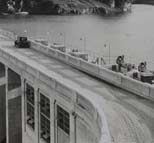 |
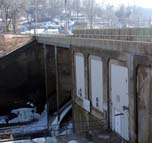 |
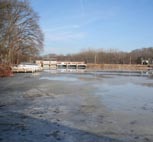 |
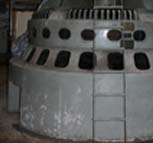 |

